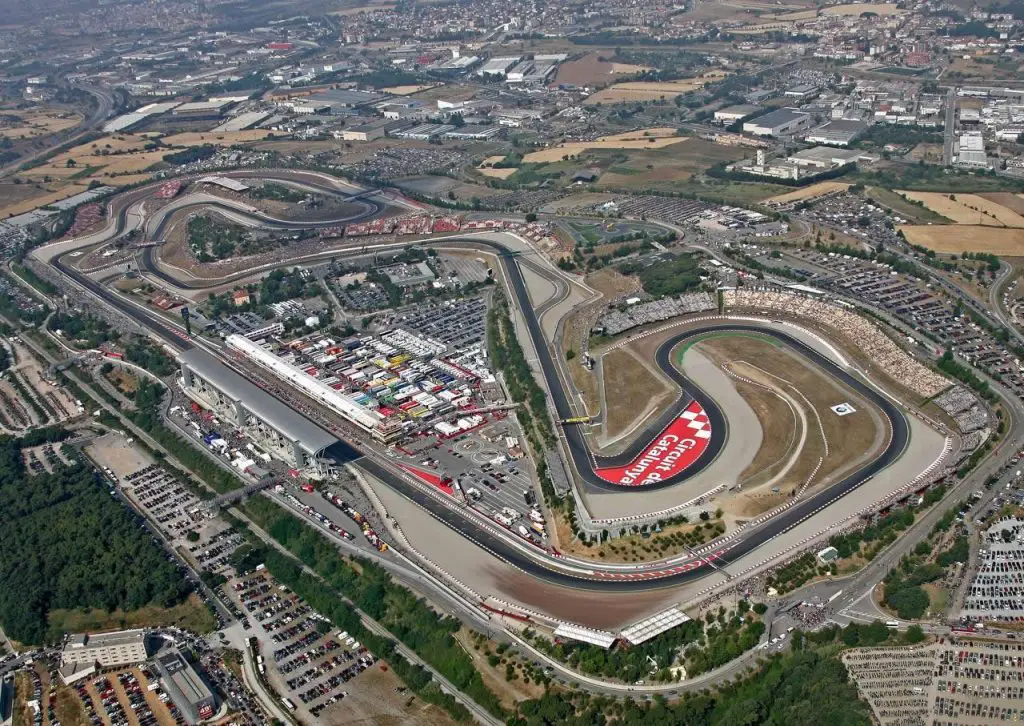Winter Testing for the 2018 Formula One season begins on 26th February at the Circuit de Barcelona Catalunya in Spain. Our first glimpse of the cars in action is always one of the most exciting parts of the year. Here are some pointers on what to look out for over the next two weeks!
What is the point of Winter Testing?
The teams will take part in two four-day tests. The first from 26th February to 1st March and the second from 6th to 9th March. The tests will take place at the Circuit de Barcelona Catalunya – the venue for the Spanish Grand Prix. This is the teams’ only allowed track time between now and the start of First Practice for the Australian Grand Prix, so is of the utmost importance ahead of the new season.
Don’t Trust The Lap Times
Rule number one of testing: don’t trust the lap times. Just because a team is fastest in Winter Testing, it doesn’t mean they’ll be fastest in Australia. There are plenty of unknown factors at play in Winter Testing – we won’t know what engine modes cars are running or how much fuel the cars have in them. We may see cars setting fast but unrepresentative lap times, or other teams sandbagging and not showing their true speed.

Of course, sometimes there are exceptions to the rule of not trusting lap times. Brawn GP were a revelation in Winter Testing in 2009 and went on to dominate the opening rounds of the season and win the Constructors’ Title.
We may, however, get some idea of how much faster the cars will be this season compared to last season. The fastest lap set in Winter Testing in 2017 was a 1:18.634, by Kimi Raikkonen for Ferrari, set on the Super Soft tyre. It is predicted that lap times will be around 1-1.5 seconds quicker by the end of 2018, so we could get some idea of how realistic this target is over the coming weeks. The pole time for the 2017 Spanish Grand Prix was a 1:19.149, set by Lewis Hamilton.
Engine Usage
Do Mercedes still have the engine advantage? Most likely, yes. But just how close will the Ferrari and Renault engines be? And what about Honda – how will they get on in their first few days as partners with Toro Rosso? Another major talking point will be how McLaren get on in their first test with Renault power. Again, lap times will be irrelevant. What we are looking for here is which team and engine can get the most laps in without hitting problems – especially vital with the new three engine limit being introduced for the 2018 season.
Mercedes did the most running in winter testing last year with 1,096 laps completed, and had almost bulletproof reliability, suffering just one engine failure throughout the entire season (ironically at the Catalunya track, for Valtteri Bottas, during the Spanish Grand Prix).
Teams Trying New Things
Last year Winter Testing saw the development of T-wings after Mercedes attached one to their car. This year, the teams have to get used to running with the halo device. Will we see teams coming up with interesting solutions to the inherent aerodynamic issues caused by the halo?
The quest for every tenth of a second could lead some teams down some interesting paths over the coming days – but could too many changes show a team who are not comfortable with their car?
Drivers Making Mistakes
New cars means new behaviours for the drivers to get used to. Last year, Lance Stroll dented his reputation before his F1 career had begun by crashing a lot during Winter Testing. While there isn’t quite the change in regulations from 2017 to 2018 as there was from 2016 to 2017, we’re still likely to see a few drivers making errors.
Fernando Alonso made a costly mistake in testing at Catalunya in 2015. He hit the wall at Turn Three, was knocked unconscious and airlifted to hospital. He missed the opening race of the season as a result of the mysterious incident.
Body Language
Perhaps most telling to how competitive each car is will be the drivers’ and teams’ body language. If a driver looks particularly dejected while being interviewed about their hopes for 2018, then perhaps all is not well with their car for the season.
A Surprise?
It’s also worth keeping an eye on Sauber who, with their new partnership with Alfa Romeo, are on a much more equal playing field as they take the current spec Ferrari engine.
Track Evolution
Another interesting factor at play this year will be track evolution. The Catalunya track has recently been resurfaced, and this is the first major running to take place on the new asphalt. Pirelli racing manager Mario Isola expects the first two days of the test to feature the most track evolution.
Lights Out will be covering the two weeks of Winter Testing live on the Twitter account. Follow to stay up to date on all the latest pre-season F1 news!

